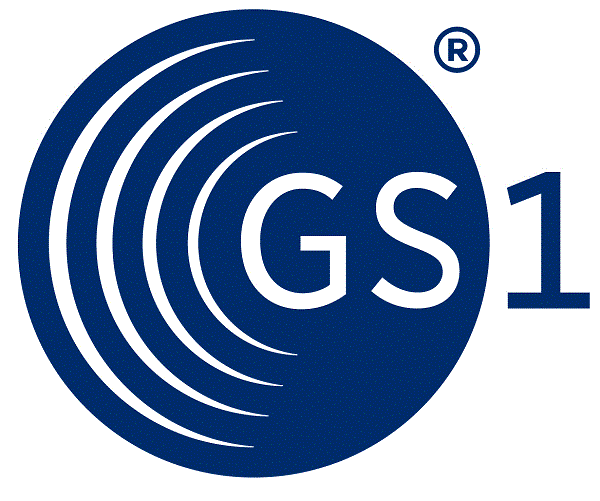|
 |
1.3.2. GS1 Identification Keys
1.3.4. GS1 Global Data Synchronisation Network
1.4. Syntax version 4 Specific Features
1.4.1. GS1 Global Data Synchronisation Network
1.4.3. D.01B messages using features specific to syntax version 4
2.3.1. Party Information (PARTIN)
2.3.2. Product Inquiry (PROINQ)
2.3.4. Price/Sales Catalogue (PRICAT)
2.4.1.1. Request for Quotation (REQOTE)
2.4.1.3. Contractual Conditions CNTCND)
2.4.2.1. Purchase Order (ORDERS)
2.4.2.2. Purchase Order Response (ORDRSP)
2.4.2.3. Purchase Order Change Request (ORDCHG) (ORDCHG)
2.4.2.4. Order Status Enquiry (OSTENQ)
2.4.2.5. Order Status Report (OSTRPT)
2.4.3. Transport and Delivery Messages
2.4.3.1. Cargo/Goods Handling and Movement (HANMOV)
2.4.3.2. Instruction to Despatch (INSDES)
2.4.3.3. Firm Booking (IFTMBF)
2.4.3.4. Booking Confirmation (IFTMBC)
2.4.3.5. Transport Instruction (IFTMIN)
2.4.3.6. Forwarding and Consolidation Summary (IFCSUM)
2.4.3.7. Transport Status (IFTSTA)
2.4.3.8. Arrival Notice (IFTMAN)
2.4.3.9. Despatch Advice (DESADV)
2.4.3.10. Receiving Advice (RECADV)
2.4.3.11. Announcement for Returns (RETANN)
2.4.3.12. Instructions for Returns (RETINS)
2.4.4. Payment and Financial Messages
2.4.4.3. Remittance Advice (REMADV)
2.4.4.4. Multiple Payment Order (PAYMUL)
2.4.4.5. Commercial Account Summary (COACSU)
2.4.4.6. Commercial Dispute (COMDIS)
2.5. Report and Planning Messages
2.5.1. Delivery Schedule (DELFOR)
2.5.2. Sales Data Report (SLSRPT)
2.5.3. Sales Forecast Report SLSFCT)
2.5.4. Inventory Report (INVRPT)
2.5.5. Syntax and Service Report Message (CONTRL)
2.5.6. Application Error and Acknowledgement (APERAK)
2.5.7. Multiple Debit Advice (DEBMUL)
2.5.8. Multiple Credit Advice (WREMUL)
2.5.9. Banking Status (BANSTA)
2.5.10. Financial Cancellation (FINCAN)
2.5.11. Financial Statement (FINSTA)
2.5.13. Metered Services Consumption Report (MSCONS)
2.5.14. Quality Test Report QALITY)
2.6.1. Drawing Administration (CONDRA)
2.6.2. Payroll Deductions (PAYDUC)
2.6.3. General Message (GENRAL)
3. MAINTENANCE AND IMPLEMENTATION OF EANCOM®
3.1.2. Processing a Work Request (WR)
3.2.3. EANCOM® and Data Alignment
4.1. Identification of trade items
4.1.1. Variable quantity trade items
4.1.3. Promotional variants (PIA)
4.2. Identification of logistic units (PCI/GIN)
4.3. Identification of parties and locations (NAD)
4.4. Date, time and period (DTM)
4.6.4. Segment repetition and sequencing
4.8. Standard allowances and charges (ALC)
4.9. Temporary codes, use of DE 3055 and 1131
4.10. Sub-lines in EANCOM® messages
4.10.1. Examples of the use of sub-lines
4.11. Hierarchies in PRICAT/PRODAT
4.12. Referencing in EANCOM® (RFF)
4.13. Package Marking in EANCOM®
4.14. Communicating GS1 trade item numbers in EANCOM®
4.15. GS1 Application Identifiers in EANCOM®
4.15.1. Application Identifiers related to trade items
4.15.2. Application Identifiers related to logistic units
4.15.3. Application Identifiers related to locations
5.2. UN/EDIFACT syntax version 4 overview
5.2.6. Representation of numeric values
5.2.7. Character sets and syntax identifiers
5.3. Directory status, version and release
5.5. Documentation conventions
5.5.1. Format and picture of data elements
5.6. Message structure charts and branching diagrams
5.7. Interchange structure and service segments
5.8. Digital signature in EANCOM®
6. APPENDIX 2: GLOSSARY of EDI TERMINOLOGY
|